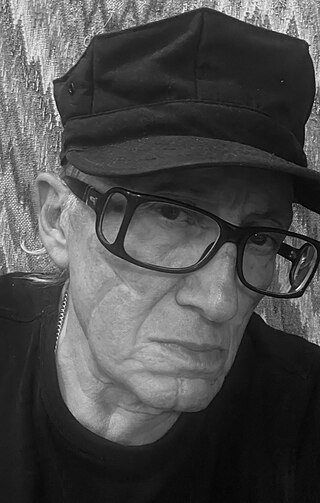Top Qs
Timeline
Chat
Perspective
Mihail Chemiakin
Russian artist From Wikipedia, the free encyclopedia
Remove ads
Mihail Mikhailovich Chemiakin or Shemyakin (Russian: Михаил Михайлович Шемякин; born 4 May 1943) is a Russian-American painter, stage designer, sculptor and publisher, and a controversial representative of the nonconformist art tradition of St. Petersburg.
This article has multiple issues. Please help improve it or discuss these issues on the talk page. (Learn how and when to remove these messages)
|

Remove ads
Early life
Chemiakin was born to a military family. His father, a Kabardian from the Caucasus Mountains Mikhail Kardanov, had lost his parents and was adopted by a friend of his father's, White Army officer Piotr Chemiakin. The artist's father eventually became a Soviet Army officer. He received one of the first Orders of the Red Banner at the age of thirteen.[citation needed] Chemiakin's mother was an actress and poet Yulia Nikolaevna Predtechenskaya of Russian noble heritage. She met her future husband in 1941 when he came to the Moscow circus to recruit volunteers to fight in World War II, and accompanied him to the front. She served in the cavalry under the command of Lev Dovator and took part in battles alongside her husband.[1]
Remove ads
Mihail Chemiakin's Musée Imaginaire
Summarize
Perspective
Mihail Chemiakin's Musee Imaginaire is a research project by Chemiakin, who considers the history of art from the point of view of the transformation of images. The basis of the research methodology is the interpretation and systematization of visual images.[2] The studies are presented in the form of sheets with images pasted on them, grouped according to the principle of visual generality — thematic, stylistic, figurative, iconographic.
Chemiakin's project was partially inspired by an essay by André Malraux,[3] who first formulated the concept of the Imaginary Museum. He proposed juxtaposing works of art from different cultures and eras to analyze the changing image or, as Malraux wrote, metamorphosis. In addition, he suggested that everyone should compose their own personal museum, selecting works without relying on the opinions and limited choices of major institutions.[4] This was made possible by the mass proliferation of photography.[5]
"Musée imaginaire" appears as an alternative to the classical museum in the evaluation of contemporary art, for which no clear aesthetic requirements have been defined.[6]
Performance in Paris on the Quai Branly at the Salon du Literature Russe in 2024 [7]
Remove ads
See also
References
Sources
Further reading
External links
Wikiwand - on
Seamless Wikipedia browsing. On steroids.
Remove ads

